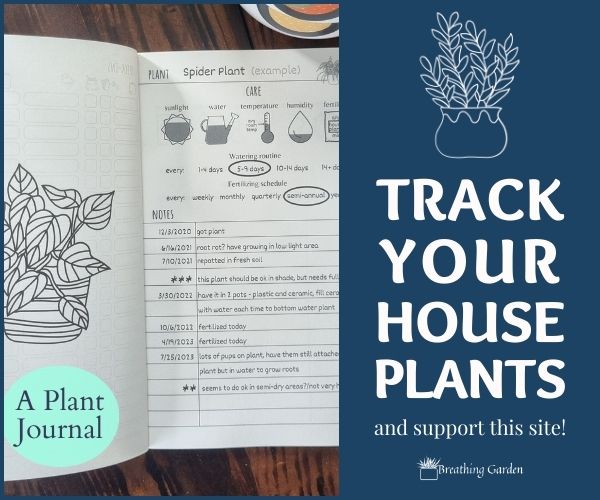If your lavender is starting to turn yellow, don’t worry – you can get it growing green again! It’s a common problem and there are many things you can do to get the leaves growing green again. The most important thing is to determine the cause of the yellowing. Is it because you’re giving them too much fertilizer? Or is the fertilizer you’re using not appropriate for lavender? Or is it a watering issue? Keep reading to find out why you might have a lavender yellowing and how to fix the problem!
*This post may include affiliate links. When you purchase items from these links, we will receive a small commission, at no extra cost to you, to help support this website. Thank you for your support! Read more ->
Why Is My Lavender Yellowing?
If your lavender leaves are yellowing, it does mean you’ve got a problem on your hand! There are 3 main causes for a yellowing lavender, which includes fertilization problems, root rot (overwatering), or a lack of sunlight.
This does mean a bit of sleuthing work for you to figure out which one of these is the causes, but it should be fairly easy to tell, and then it’s just up to you to fix the issue!
Over Fertilized/Wrong Nutrients
One of the main causes for a lavender yellowing is a fertilizer problem. So if you’ve just fertilized your lavender or it’s close enough to your grass to absorb some fertilizer that you put on your lawn, this is likely the problem!
Lavender in it’s own way is tricky with nutrients, as it really doesn’t need many, and if it’s given the wrong nutrients, it will start to turn yellow. (Continue reading to learn how to fertilize lavender, in more detail).
There are three ways to fix an over-fertilization issue, especially if it’s being grown in a pot. One is to water your lavender plant with clear water to try and flush out the nutrients that are causing the problem. The second, if it’s being grown in a pot, is to repot your lavender into fresh soil after you’ve tried to clear most of the soil off of the roots. The final option is to wait it out, as eventually, the nutrients will be used up by the plant and it will start growing green again.
Keep reading: French Lavender, Spanish Lavender
Root Rot Causes Lavender Yellowing
The second main cause of a yellowing lavender is root rot, which happens when your lavender is overwatered. With root rot, the entire plant will be yellowing, not just the leaves. Your lavender could also be drooping when it’s overwatered. To figure out if you’ve got a root rot or overwatering problem on your hand, feel the soil. If it feels soggy to the touch, it’s probably overwatered. You can also look at the roots – if any look brown at the ends and aren’t firm, you’ve probably got root rot.
To fix a root rot problem, you need to make sure that your lavender is getting the right amount of water. This means letting the soil dry out completely in between watering and making sure that the drainage is good. If you’re growing your lavender in a pot, make sure there’s a drainage hole at the bottom. If you’re not sure how much to water your lavender, stick your finger into the soil – if it feels dry an inch below the surface, it’s time to water!
Again, if you’re growing your lavender in a pot, you can replace the soil with dry soil and NOT WATER it for a few weeks. If it’s in the ground, try to keep it from getting watered and if it’s raining a bunch, you may want to consider getting an umbrella to cover until it starts getting green again.
Lack of Sunlight
The last common problem that will make your lavender turn yellow is a lack of sunlight. If you notice that your plant is getting leggy (stretched out) and the leaves are turning yellow, it’s probably not getting enough sunlight. The best way to fix this problem is to move your lavender plant to a sunnier spot if you can, since lavender doesn’t grow well in the shade.
You may be interested in: Lavender companion plants, how to grow lavender indoors
How To Fertilize Lavender – Nutrients it Needs
As mentioned earlier, lavender is a fairly picky plant when it comes to being fertilized.
It’s used to an arid soil that is quick draining, and really thrives when it has fewer nutrients.
So when you’re fertilizing your other plants, think twice before fertilizing your lavender. It really only needs once a year, and that’s during the springtime.
Lavender plants do best in a pretty neutral pH soil, so that can be something to look for in fertilizers is that it doesn’t make it too alkaline or acidic.
Look for a fertilizer that, while it has Nitrogen, phosphorous, and potassium, has low levels. These are some of the nutrients that definitely cause lavender leaves to yellow.

I suggest a fertilizer like this Raw Grow – Check Price Here
Summary
Lavender is a tricky plant to grow, but with the right nutrients and care, it can thrive. If your lavender starts to turn yellow, there are a few things you can do to fix the problem. Make sure to water correctly, give it plenty of sunlight, and don’t fertilize often, but if you do, use a fertilizer that has low levels of nitrogen, phosphorous, and potassium.



